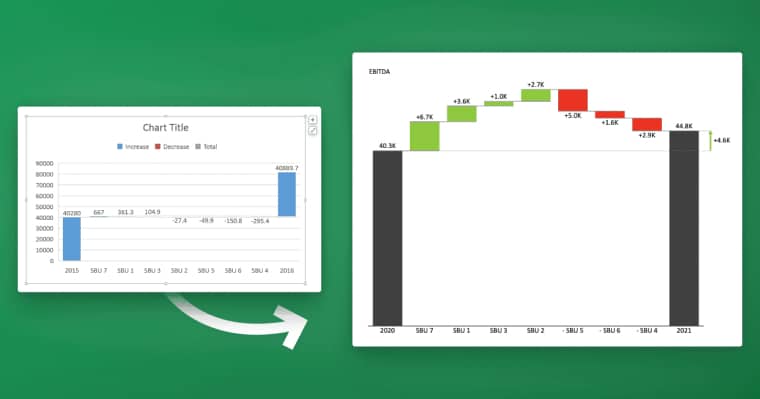If you work with data, it’s likely that you’ve heard the term “covariance” before. Covariance is an important statistical measure that describes the relationship between two sets of variables. Simply put, covariance measures how much two variables change together. In Excel, it’s easy to calculate covariance using a built-in formula, and the results can be visualized with charts and graphs. This article will provide an in-depth guide to calculating covariance in Excel, including basic concepts, preparing your data, and interpreting the results.
Table of Contents
Understanding the Basics of Covariance
Covariance is a measure of how two sets of data are related. It indicates the degree to which changes in one variable are associated with changes in another variable. More specifically, if the two variables have a positive covariance, then they tend to increase or decrease together. Conversely, if they have a negative covariance, then they tend to move in opposite directions. A covariance of zero indicates that the two variables are independent of each other.
One important thing to note about covariance is that it does not indicate causation. Just because two variables have a strong covariance does not mean that one variable causes the other to change. It is possible that there is a third variable that is influencing both variables, or that the relationship is purely coincidental.
Covariance is often used in finance to measure the risk and return of a portfolio. By calculating the covariance between different assets in a portfolio, investors can determine how the assets are likely to perform together. A portfolio with assets that have a high positive covariance may be riskier than a portfolio with assets that have a low or negative covariance, as the assets are more likely to move in the same direction.
Why Covariance is Important in Data Analysis
Covariance is a fundamental concept in statistics and data analysis. It helps us understand the relationships between different variables and can provide insights into patterns and trends within our data. By calculating covariance, we can identify which variables are most closely related and use this information to make more informed decisions. For example, an investor may use covariance analysis to determine which assets are most strongly correlated, and therefore which ones to invest in for maximum returns.
Another important application of covariance is in the field of machine learning. In this context, covariance matrices are used to represent the relationships between different features of a dataset. By analyzing these matrices, machine learning algorithms can identify which features are most important for making accurate predictions. This information can then be used to optimize the performance of the algorithm and improve its accuracy.
Furthermore, covariance is also used in the field of physics to describe the relationships between different physical quantities. For example, in quantum mechanics, the covariance of two observables is used to determine whether they can be measured simultaneously. This concept is known as the Heisenberg uncertainty principle, which states that the more precisely one observable is measured, the less precisely the other can be measured.
What is Excel and How Does It Work for Covariance?
Excel is a powerful spreadsheet program that allows users to input, manipulate, and analyze data. Its built-in formulas and functions make it easy to perform complex calculations quickly and accurately. In terms of covariance, Excel provides a built-in formula, COVARIANCE.P, that calculates the covariance between two sets of data. This formula can be used to analyze a wide range of relationships between different variables.
Additionally, Excel also offers a variety of chart and graph options that can be used to visually represent covariance data. These visual aids can help users better understand the relationship between two variables and identify any patterns or trends that may exist. Excel’s chart and graph options can be customized to fit the specific needs of the user, allowing for a more personalized and effective analysis of covariance data.
Preparing Your Data for Covariance Calculation in Excel
Before you can calculate covariance in Excel, you’ll need to make sure that your data is in the correct format. First, make sure that your data is organized into columns or rows, with each observation in a separate cell. Next, ensure that your data is free of any errors or missing values. Finally, make sure that your data is consistent across all observations, with the same units of measurement and time period.
It is also important to note that covariance is a measure of the relationship between two variables. Therefore, it is important to choose the correct variables to calculate covariance for. Consider the research question or hypothesis you are trying to test and select variables that are relevant to that question. Additionally, it is important to keep in mind that covariance can be affected by outliers in the data, so it may be necessary to remove or adjust for outliers before calculating covariance.
Step-by-Step Guide to Calculating Covariance in Excel
Calculating covariance in Excel is a relatively straightforward process. Here’s a step-by-step guide:
- Select the cell where you want the covariance calculation to appear.
- Type the COVARIANCE.P formula into the cell.
- Select the first range of data for the calculation.
- Type a comma.
- Select the second range of data for the calculation.
- Type a closing parenthesis.
- Press Enter to calculate the covariance.
It is important to note that covariance measures the relationship between two variables. A positive covariance indicates that the variables move in the same direction, while a negative covariance indicates that the variables move in opposite directions.
Excel also offers the COVARIANCE.S formula, which calculates the sample covariance instead of the population covariance. The process for using this formula is the same as for COVARIANCE.P.
How to Interpret Covariance Results in Excel
Once you have calculated the covariance in Excel, you’ll need to interpret the results. The covariance value itself isn’t particularly meaningful without context. To interpret it, compare it to the standard deviation of the two sets of data. If the covariance is relatively small compared to the standard deviation, then the variables are probably not strongly related. If the covariance is large compared to the standard deviation, then the variables may be strongly related. Additionally, positive or negative sign of the covariance value indicates the direction of correlation between the two variables.
It is important to note that covariance only measures the strength of a linear relationship between two variables. It does not indicate causation or the strength of a non-linear relationship. Therefore, it is important to use other statistical measures and methods to fully understand the relationship between the variables.
Furthermore, when interpreting covariance results, it is important to consider the units of measurement of the variables. If the variables have different units, the covariance value may not be comparable or meaningful. In such cases, it is recommended to use correlation coefficient, which is a standardized measure of the relationship between two variables and is not affected by the units of measurement.
Common Mistakes to Avoid When Calculating Covariance in Excel
When calculating covariance in Excel, there are several common mistakes to avoid. These include:
- Forgetting to include all observations in the calculation
- Using the wrong range of data for the calculation
- Forgetting to ensure that the data is consistent across all observations
- Incorrectly interpreting the results of the calculation
One additional mistake to avoid when calculating covariance in Excel is using the wrong formula. There are different formulas for calculating covariance depending on whether you are working with a sample or a population. Using the wrong formula can lead to inaccurate results.
Another mistake to avoid is not understanding the limitations of covariance as a measure of correlation. Covariance only measures the direction of the relationship between two variables, but it does not provide information about the strength of the relationship. It is important to use other measures, such as correlation coefficients, to fully understand the relationship between variables.
Advanced Tips for Optimizing Your Covariance Calculation in Excel
If you’re looking to get the most out of your covariance calculations in Excel, here are some advanced tips:
- Try using Excel’s array formulas to perform multiple covariance calculations at once
- Use Excel’s conditional formatting feature to highlight cells with particularly high or low covariance values
- Use Excel’s data validation feature to ensure that your input values are within a certain range
Another advanced tip for optimizing your covariance calculation in Excel is to use the built-in covariance function. This function allows you to calculate the covariance between two sets of data quickly and easily. To use the covariance function, simply select the cell where you want the result to appear, type “=COVARIANCE.S(array1,array2)” (without the quotes), and replace “array1” and “array2” with the ranges of cells containing your data. This will give you the covariance between the two sets of data.
Using Excel Functions for Easy and Accurate Covariance Calculation
Excel provides a variety of built-in functions that can make covariance calculation easier and more accurate. For example, you can use the AVERAGE function to find the average of a set of values, and the STDEV.P function to calculate the standard deviation. These functions can then be used in conjunction with the COVARIANCE.P formula to provide more accurate results.
Visualizing Your Covariance Results with Charts and Graphs in Excel
To better understand your covariance results, you may want to visualize them using charts and graphs. Excel provides a wide range of visualization tools, including scatter plots, line charts, and bar graphs. By visualizing your data, you can identify patterns and trends that may not be apparent from the raw numbers alone.
Comparing Multiple Sets of Data with Covariance Analysis in Excel
Excel’s covariance analysis feature allows you to compare multiple sets of data at once. This can be especially useful for identifying relationships between multiple variables. By analyzing the covariance between multiple sets of data, you can gain a more comprehensive understanding of the relationships between different variables and make more informed decisions.
Applying Your Covariance Results to Real-World Business Scenarios
Covariance is widely used in business scenarios to identify trends and patterns in data. For example, a marketing department may use covariance analysis to identify which marketing strategies are most effective at driving sales. Similarly, a financial analyst may use covariance analysis to identify which investments are most closely correlated with stock market trends.
Conclusion
Calculating covariance in Excel is a useful and powerful tool for anyone working with data. By understanding the basics of covariance, preparing your data correctly, and interpreting the results accurately, you can gain valuable insights into the relationships between different variables. With Excel’s built-in functions and visualization tools, you can perform complex calculations quickly and easily, and use your results to make more informed decisions in real-world business scenarios.














